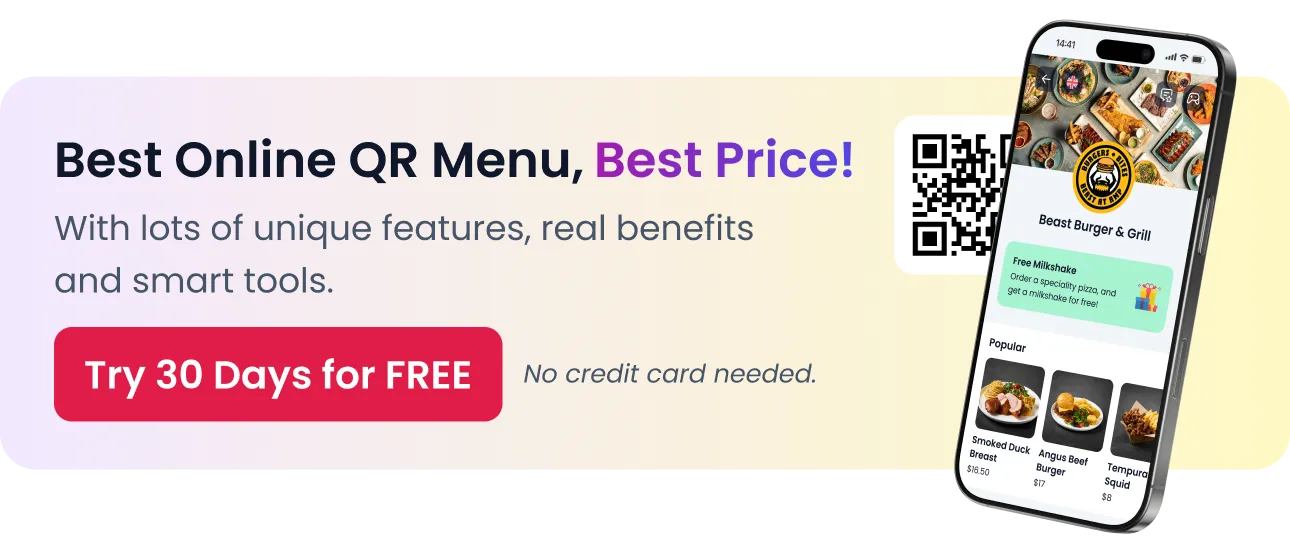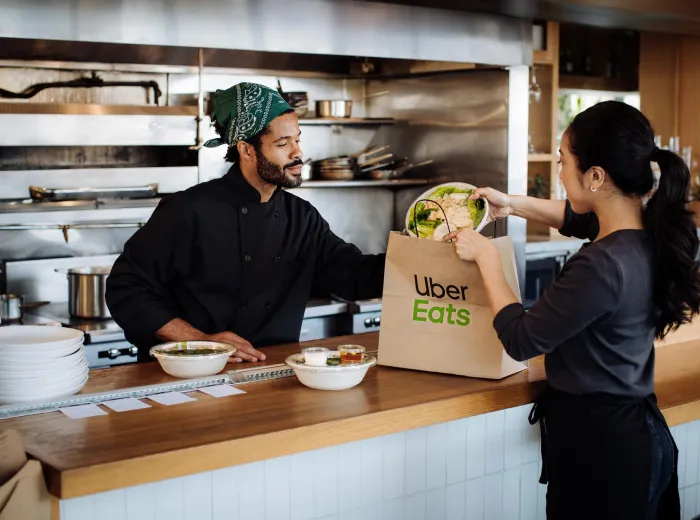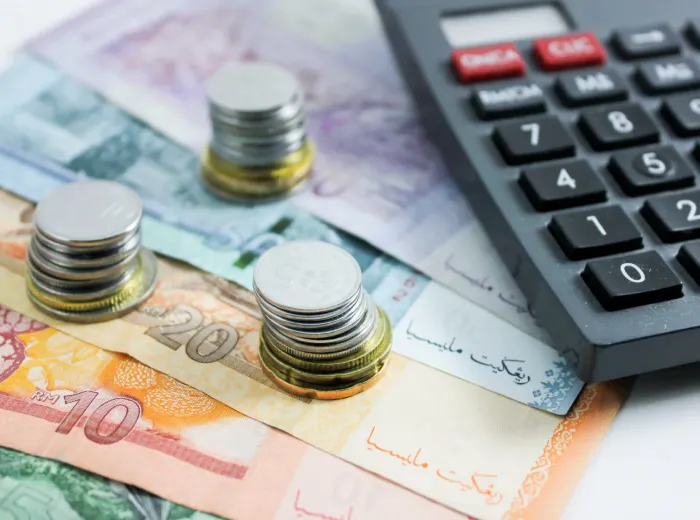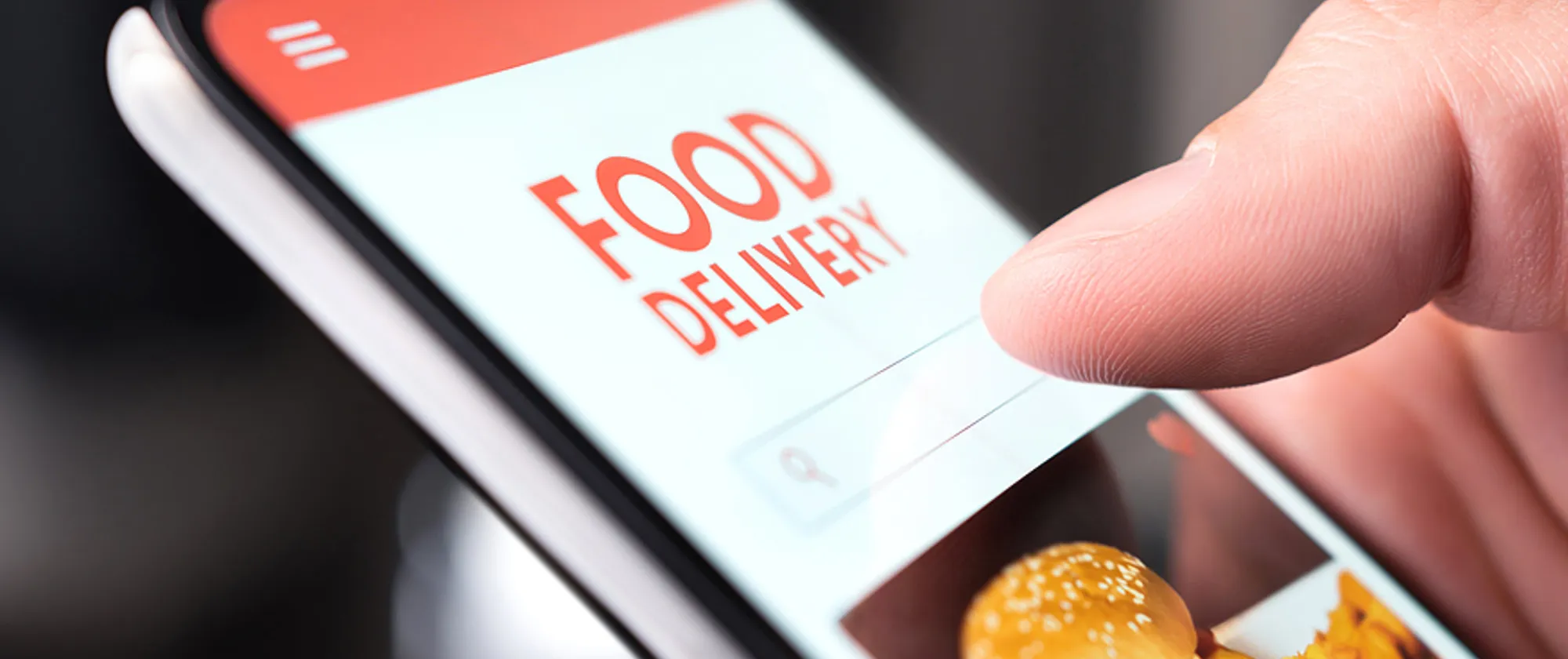
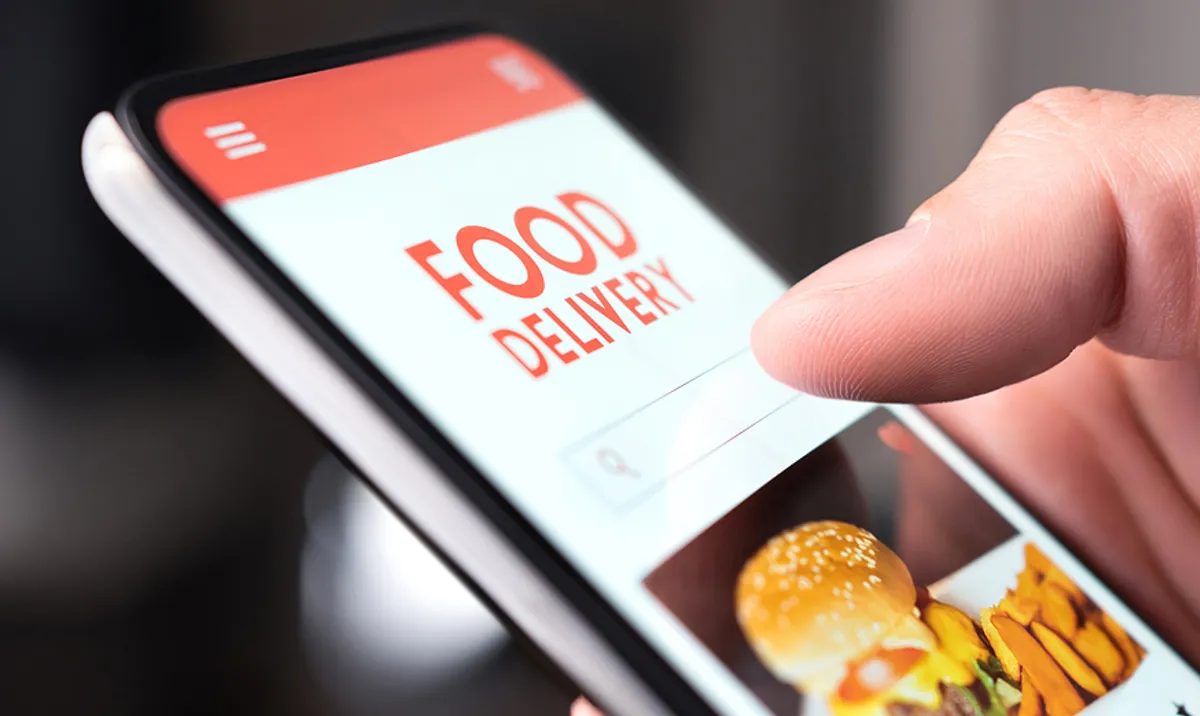
How to Increase Orders on Food Delivery Apps?
Food delivery apps have transformed the way restaurants operate, creating new revenue streams and expanding customer reach beyond physical locations. With more consumers preferring the convenience of ordering food from their smartphones, being present on platforms like Uber Eats, DoorDash, and Deliveroo is no longer optional—it’s a necessity.
However, simply listing your restaurant on a food delivery app isn’t enough to guarantee success. Competition is fierce, with thousands of eateries vying for visibility. To stand out, restaurant owners must optimize their presence, improve menu design, leverage promotions, and enhance operational efficiency.
In this guide, we’ll explore the most effective strategies to increase your food delivery app orders, covering topics such as ranking higher in app algorithms, designing an attractive menu, leveraging marketing tools, and avoiding common mistakes. Whether you’re new to food delivery services or looking to refine your approach, these insights will help you maximize your online sales and grow your restaurant’s revenue.
Why Food Delivery Apps Are Essential for Restaurants
The food delivery industry has grown rapidly in recent years, reshaping how restaurants operate and interact with customers. With millions of users ordering meals through apps like Uber Eats, DoorDash, and Deliveroo, restaurants that embrace these platforms can unlock new revenue streams and enhance brand visibility. Below, we explore why food delivery apps have become a must-have for modern restaurants.
The Growing Demand for Online Food Orders
The rise of digital convenience has made food delivery a dominant force in the restaurant industry. Consumers today expect fast, seamless online ordering, and restaurants that fail to meet this demand risk losing customers to competitors.
- Market Growth: The global food delivery market is expected to exceed $500 billion by 2030, with a steady increase in adoption across all age groups.
- Changing Consumer Behavior: More people prefer ordering meals at home instead of dining out, especially in urban areas where time constraints and convenience play a major role.
- Impact of COVID-19: The pandemic accelerated the shift toward digital ordering, with many customers maintaining these habits even as restrictions lifted.
Being on food delivery apps ensures that your restaurant remains accessible to this expanding customer base.
How Food Delivery Apps Expand Your Customer Base
Partnering with food delivery apps allows restaurants to tap into a much larger audience than traditional foot traffic alone.
- Reach Beyond Your Location: A physical restaurant is limited by its geographical location, but food delivery apps allow you to serve customers across a wider area.
- Attract New Customers: Many people discover new restaurants through delivery apps rather than traditional advertising. A well-optimized listing can introduce your brand to first-time buyers.
- Catering to Different Audiences: Food delivery services appeal to busy professionals, students, and families who may not have the time to dine in but still want quality meals at home.
By being visible on multiple apps, restaurants can reach diverse customer segments and increase overall sales.
Benefits of Partnering with Food Delivery Platforms
Beyond increasing orders, food delivery apps offer a range of benefits that enhance restaurant operations and marketing.
✅ Increased Sales Without Additional Overhead
- No need to expand your physical location—reach more customers using existing kitchen resources.
- Online orders often result in higher ticket sizes due to bundled deals and impulse purchases.
✅ Built-In Marketing & Exposure
- Food delivery apps promote partner restaurants through featured listings, discount offers, and sponsored placements.
- Customers searching for specific cuisines are more likely to discover your restaurant organically.
✅ Convenient Logistics & Delivery Services
- Many platforms handle payment processing, order management, and delivery logistics, reducing the burden on restaurant owners.
- Real-time order tracking improves customer satisfaction and reduces complaints.
✅ Data-Driven Insights for Growth
- Access to detailed reports on popular menu items, peak order times, and customer demographics helps restaurants refine their offerings.
- Adjust pricing, promotions, and menu selections based on consumer trends.
Food delivery apps are more than just an extra revenue stream—they serve as a powerful tool for growing your brand, optimizing operations, and staying competitive in the modern restaurant industry.
Choosing the Right Food Delivery Apps
With multiple food delivery apps available, selecting the right platform for your restaurant is crucial. The best app for your business depends on factors like commission fees, customer reach, and integration capabilities. Below, we explore the most popular food delivery apps, key factors to consider, and whether using multiple platforms is a smart strategy.
Best Food Delivery Apps for Restaurants
Not all food delivery apps are the same—some have a larger customer base, while others offer better commission rates or marketing tools. Here are the most widely used platforms:
- Uber Eats – A global leader with a massive user base and strong brand recognition.
- DoorDash – Dominates the U.S. market and offers extensive promotional tools.
- Grubhub – Popular in the U.S., particularly in urban areas.
- Deliveroo – A top choice in the UK, Europe, and the Middle East.
- Zomato – Strong presence in India and growing in other regions.
- Talabat – The go-to delivery platform in the Middle East.
- Careem – Popular in the UAE, Saudi Arabia, and other Gulf countries.
Each app has its own strengths, so choosing the right one depends on your target audience and business goals.
Factors to Consider When Selecting a Platform
Before signing up with a food delivery app, evaluate these critical factors to ensure it aligns with your restaurant’s needs:
✅ Commission Rates & Fees
- Most food delivery apps charge commissions ranging from 15% to 35% per order.
- Some platforms offer lower fees for self-delivery options.
- Check for hidden costs like sign-up fees, marketing fees, or service charges.
✅ Customer Reach & App Popularity
- Research which apps are most commonly used in your region.
- Consider an app with a large customer base to maximize potential orders.
✅ Integration with Your POS System
- A seamless integration with your restaurant’s POS system prevents order errors and reduces manual data entry.
- Some apps provide automated order syncing, making operations smoother.
✅ Marketing & Promotion Features
- Look for platforms that offer discounts, loyalty programs, and promotional tools.
- Apps with featured listings and paid promotions can improve visibility.
✅ Delivery Options
- Some apps require the restaurant to handle its own deliveries, while others provide their own drivers.
- If using the app’s delivery service, check delivery speed, coverage area, and customer satisfaction ratings.
Choosing an app that balances profitability, exposure, and ease of use is key to increasing orders without cutting too deeply into your margins.
Multi-App Strategy: Should You Be on Multiple Platforms?
Many restaurants wonder if they should list on one or multiple food delivery apps. Here’s what to consider:
✅ Benefits of Multi-App Strategy
- Increases visibility: Your restaurant appears on multiple platforms, reaching more customers.
- Diversifies income: If one platform performs poorly, others can compensate.
- Reduces dependency: Less reliance on a single app’s commission rates or policy changes.
❌ Potential Downsides
- Higher operational complexity: Managing multiple platforms requires extra time and effort.
- Inconsistent pricing: Different apps may have varying commission structures, making pricing tricky.
- More promotional costs: Running discounts on multiple platforms can eat into profits.
📌 Best Practice: If you have the resources, using two or three apps can maximize your reach while minimizing risks. However, if you prefer simplicity, choose one strong platform and focus on optimizing performance.
Selecting the right food delivery apps is the first step toward increasing your online orders. By evaluating commission fees, customer reach, and integration capabilities, you can ensure your restaurant partners with the best platform for long-term growth.
Optimizing Your Menu for Online Sales
A well-optimized menu can significantly increase your online orders and boost your restaurant’s revenue. Since customers rely on visuals and descriptions to make their choices, it’s essential to design a menu that is clear, appealing, and easy to navigate. Below, we’ll cover how to create a delivery-friendly menu, use effective pricing strategies, enhance visuals, and leverage dietary labels to attract more customers and maximize profits.
How to Design a Delivery-Friendly Menu
Not all dishes are suited for delivery. To ensure quality and efficiency, focus on creating a menu that:
- Features high-margin items – Prioritize dishes with low ingredient costs but high perceived value.
- Reduces preparation time – Choose meals that can be prepared and packed quickly to avoid long wait times.
- Travels well without quality loss – Avoid items that become soggy, melt, or lose texture during transit.
- Simplifies choices for customers – Too many options can overwhelm customers. Stick to clear, concise sections.
📌 Example: Instead of offering 10 different burger variations, consider a base burger with customizable toppings. This simplifies inventory and enhances the ordering experience.
Pricing Strategies to Maximize Revenue
Setting the right price for your delivery menu is essential for maintaining profitability. Here’s how to strategically price your items:
✅ Adjust Prices for Higher Costs
- Delivery apps charge commissions (15%–35% per order), so consider slightly increasing menu prices to compensate for these fees.
- Many customers expect slightly higher prices on delivery apps compared to in-store menus.
✅ Encourage Higher Spend with Bundles & Combos
- Meal bundles (e.g., “Burger + Fries + Drink” at a discounted rate) increase the average order value.
- Offer family-sized meals or shareable platters for groups.
✅ Use Psychological Pricing
- Pricing items at $9.99 instead of $10 can make a dish feel more affordable.
- Highlight best-value deals using words like “Customer Favorite” or “Best Seller“.
Smart pricing ensures that your restaurant remains competitive while maintaining profitability on food delivery apps.
Using High-Quality Images & Descriptions
Visual appeal plays a major role in a customer’s decision to place an order. Restaurants with professional food photography and compelling menu descriptions often outperform competitors.
✅ Invest in Professional Food Photography
- Use bright, high-resolution images that highlight textures, colors, and freshness.
- Avoid using stock images—customers prefer to see actual photos of your dishes.
✅ Write Persuasive Menu Descriptions
Your menu descriptions should:
- Be short and enticing (under 150 characters).
- Highlight unique flavors or ingredients (e.g., “Juicy grilled chicken with a smoky BBQ glaze”).
- Use sensory words like crispy, tender, creamy, spicy, or zesty to make dishes more appealing.
📌 Example Before & After:
❌ “Chicken Wings” → Too basic, lacks appeal
✅ “Crispy Buffalo Wings with a Spicy Kick” → Sounds more delicious & descriptive
Restaurants that invest in compelling descriptions and high-quality images see higher conversion rates on food delivery apps.
Leveraging Dietary & Allergen Labels
More customers are looking for health-conscious options and clear allergen information before ordering. Adding dietary labels can:
- Increase customer trust and transparency.
- Help your restaurant appear in filtered searches (e.g., “Vegetarian-friendly” or “Gluten-Free”).
- Reduce order mistakes and refund requests.
💡 Examples of Useful Dietary Labels:
- 🥦 Vegetarian
- 🌱 Vegan
- 🌾 Gluten-Free
- 🥜 Nut-Free
- 🥩 High-Protein
- 🔥 Spicy
Pro Tip: Use Menuviel, a menu platform that provides pre-made dietary and allergen badges, making it easier to label your dishes without additional work.
Adding these labels not only helps customers make informed choices but also positions your restaurant as an inclusive option for different dietary preferences.
Final Thoughts
A well-optimized menu is one of the most effective ways to increase online sales. By creating a delivery-friendly menu, implementing smart pricing, using eye-catching visuals, and leveraging dietary labels, you can significantly boost your restaurant’s visibility, customer satisfaction, and revenue.
How to Rank Higher on Food Delivery Apps
Food delivery apps use algorithms to determine which restaurants appear first in search results, featured sections, and recommendations. Ranking higher means more visibility, more orders, and increased revenue. To improve your ranking on apps like Uber Eats, DoorDash, Deliveroo, and Talabat, focus on customer ratings, preparation times, and order volume. Below, we break down the key strategies to boost your restaurant’s position on food delivery apps.
Understanding the App’s Algorithm
Food delivery apps prioritize restaurants based on performance metrics that enhance customer satisfaction. Here are the key ranking factors:
- Order Volume & Popularity – Restaurants with more frequent orders rank higher.
- Customer Ratings & Reviews – Higher ratings (4.5+ stars) improve ranking.
- Delivery Speed & Accuracy – Fast preparation times reduce cancellations and improve rankings.
- Promotional Activity – Paid promotions, discounts, and special offers increase visibility.
- Consistency – Regularly updating your menu, adding new items, and engaging with customers helps maintain a top position.
📌 Pro Tip: If your ranking drops, analyze recent customer feedback, preparation times, and canceled orders to pinpoint issues affecting your position.
The Role of Customer Ratings & Reviews
Positive customer reviews signal quality and directly impact your app ranking. The more 5-star ratings you receive, the better your visibility.
How to Get More 5-Star Reviews:
✅ Deliver high-quality food consistently – Ensure packaging keeps food fresh and secure.
✅ Encourage customers to leave a review – Many apps allow you to send a thank-you message after an order is delivered.
✅ Respond to negative reviews professionally – Apologize, offer solutions, and show customers that you value their feedback.
✅ Offer occasional incentives – Give customers a small discount or free item for leaving feedback.
🚨 Common Mistake: Ignoring bad reviews. Instead of deleting or ignoring them, address concerns quickly to rebuild customer trust and improve future ratings.
Improving Order Preparation & Delivery Times
Fast and efficient service increases customer satisfaction and pushes your restaurant higher in search results.
Tips to Reduce Order Processing Time:
- Optimize kitchen workflow – Assign specific roles to staff for faster prep times.
- Prioritize delivery orders – Set up a separate area for online order preparation.
- Use an integrated POS system – Sync orders with your kitchen display system (KDS) to avoid delays.
- Limit menu items that take too long – If a dish requires extra prep time, consider removing it from your delivery menu.
📌 Pro Tip: Many food delivery apps track your average preparation time. If your restaurant consistently delays orders, your ranking will drop.
How Promotions & Discounts Boost Your Ranking
Food delivery apps favor restaurants that run promotions because they drive more sales and customer engagement.
Best Promotions to Improve Rankings:
- First-Time Customer Discounts – Encourage new users to try your restaurant.
- Bundle Deals – “Buy One, Get One” (BOGO) or meal combos encourage higher spending.
- Happy Hour Offers – Limited-time discounts during slow hours boost order volume.
- Free Delivery Promotions – Many apps allow you to offer free delivery in exchange for better ranking placement.
🚀 Tip: Many food delivery platforms feature “Deals & Discounts” sections—running promotions can push your restaurant to the top of these lists.
Keeping Your Menu Updated & Optimized
Apps rank restaurants higher when they actively update their menu and engage with the platform.
- Regularly refresh your menu – Add seasonal specials or highlight best-sellers.
- Test different pricing strategies – Adjust prices based on demand and competitor analysis.
- Use appealing food images – High-quality images attract more orders and increase conversion rates.
📌 Pro Tip: Some platforms send push notifications to customers when you add new items or update your menu—use this to generate excitement and drive sales.
Final Thoughts
Ranking higher on food delivery apps requires consistent effort in managing customer experience, optimizing service speed, and leveraging promotions. By maintaining high ratings, reducing order delays, offering attractive promotions, and keeping your menu updated, your restaurant can increase its visibility, attract more customers, and maximize revenue.
Promotions & Discounts to Drive More Orders
Promotions and discounts are among the most effective ways to attract new customers, encourage repeat orders, and boost your ranking on food delivery apps. Many platforms, such as Uber Eats, DoorDash, Deliveroo, and Talabat, prioritize restaurants that run promotions, increasing their visibility in search results and special deal sections. Below, we explore the best types of promotions, how to maximize exposure, and how to use app-sponsored deals effectively.
How Discounts Attract New Customers
Many customers browse food delivery apps without a specific restaurant in mind. Offering a discount or promotion can encourage them to try your restaurant over competitors.
✅ Builds Brand Awareness – New customers are more likely to order from restaurants offering deals.
✅ Increases First-Time Conversions – Discounts reduce the hesitation of trying a new place.
✅ Encourages Word-of-Mouth – Customers who enjoy your food will recommend it to others, even after the discount ends.
✅ Boosts Customer Loyalty – A well-structured discount strategy can turn first-time buyers into repeat customers.
📌 Example: Offering 20% off first orders can increase new customer acquisition by up to 30%.
Best Types of Promotions for Food Delivery Apps
Not all discounts are equally effective. Here are the most impactful promotions for increasing online orders:
1. First-Time Order Discounts
- Encourages new customers to try your restaurant.
- Examples:
- “Get 20% Off Your First Order”
- “Enjoy $5 Off on Your First Purchase”
2. Limited-Time Offers
- Creates a sense of urgency and boosts immediate sales.
- Examples:
- “50% Off All Orders This Weekend”
- “Free Appetizer with Orders Over $30”
3. Free Delivery Promotions
- Customers prefer free delivery and are more likely to order when it’s available.
- Many apps highlight free delivery deals, increasing your visibility.
- Example: “Free Delivery on Orders Above $25”
4. Bundle & Combo Deals
- Increases average order value (AOV) by packaging multiple items together.
- Example: “Family Meal Deal: 2 Large Pizzas + 1 Drink + 1 Dessert for $29.99”
5. BOGO (Buy One, Get One Free) Offers
- Encourages higher order volumes, especially for popular items.
- Example: “Buy One Burger, Get One Free”
🚀 Pro Tip: Test different types of promotions to see which generates the highest return. Some discounts may work better for new customers, while others appeal more to regulars.
Maximizing Exposure with App-Sponsored Deals
Most food delivery apps have paid promotional options that allow restaurants to increase visibility in exchange for a fee or commission-based discount. These include:
✅ Featured Listings – Your restaurant appears at the top of search results or in “recommended” sections.
✅ Homepage Placement – Apps promote certain restaurants on their homepage or featured categories.
✅ Discounted Deals Section – Running a “limited-time discount” increases the likelihood of being featured in the Deals & Offers section.
📌 Example: DoorDash offers a DashPass promotion, where restaurants can opt-in for free delivery incentives to increase orders from high-value customers.
How to Use Promotions Without Losing Profits
While promotions help increase sales, it’s important to balance discounts with profitability. Here’s how to offer deals without cutting into your margins:
- Set a minimum order amount – Example: “Get 10% Off on Orders Over $20” ensures that discounts apply only to higher-value orders.
- Target specific days or times – Offer deals during slow hours or low-traffic days to increase sales during non-peak periods.
- Use percentage discounts instead of flat rates – A 10% discount scales with order size, whereas a $5 discount could be too steep on small orders.
- Offer discounts on high-margin items – Focus on items that have a low cost-to-price ratio, so your profit remains healthy.
Final Thoughts
Promotions and discounts are essential for attracting new customers, increasing order volume, and improving app rankings. By using strategic discounts, bundle deals, and free delivery promotions, your restaurant can boost visibility and sales without sacrificing profits. Experiment with different promotional strategies and track their impact to optimize long-term success.
Leveraging Marketing to Increase Orders
Marketing plays a crucial role in driving more food delivery orders. While food delivery apps help with visibility, restaurants that actively promote their online ordering options see higher sales and stronger brand loyalty. A multi-channel marketing strategy—combining social media, online ads, email, and SMS campaigns—can significantly boost orders. Below, we’ll cover the most effective ways to market your restaurant’s delivery service.
Social Media Strategies to Drive Traffic
Social media is a powerful tool for attracting new customers and reminding existing ones to order from your restaurant. Here’s how to use platforms like Instagram, Facebook, TikTok, and Twitter to increase food delivery orders:
✅ Post High-Quality Food Photos & Videos
- Customers eat with their eyes first. Visually appealing images increase cravings and drive orders.
- Use Instagram Reels and TikTok videos to showcase your best-selling dishes.
✅ Run Limited-Time Offers & Promotions
- Announce special deals for delivery orders only.
- Example: “Order today & get FREE dessert with any meal! Only for Uber Eats orders!”
✅ Use Stories & Polls to Engage Customers
- Ask followers what they’d like to see on the menu.
- Run interactive polls: “Which dish should be our next special?”
✅ Collaborate with Influencers & Food Bloggers
- Partner with local food influencers to create engaging content.
- Offer them a free meal in exchange for an honest review.
- Example: “Tag us in your delivery order for a chance to win a $25 gift card!”
📌 Pro Tip: Use hashtags like #FoodDelivery, #OrderOnline, and #[YourCity]Eats to attract more customers in your area.
Using Google & Social Media Ads for More Orders
Paid ads are an effective way to target potential customers who are likely to order from you. Platforms like Google Ads, Facebook Ads, and Instagram Ads allow you to promote your restaurant to specific audiences.
Google Ads: Appear at the Top of Search Results
- Run ads targeting “Best pizza delivery near me” or “Order Chinese food online”.
- Use Google Local Ads to promote your restaurant in nearby searches.
- Example: “Get $5 Off Your First Order – Available on Uber Eats!”
Facebook & Instagram Ads: Target Local Customers
- Run geo-targeted ads to reach customers in your delivery radius.
- Create ad campaigns focused on special promotions and limited-time discounts.
- Example: “Craving burgers? Order now & get FREE fries with your meal! Click to order.”
🚀 Bonus Tip: Retarget customers who have visited your website but didn’t place an order. Set up Facebook Pixel or Google Retargeting Ads to remind them to complete their purchase.
Email & SMS Marketing for Repeat Orders
Many restaurants overlook email and SMS marketing, but they’re highly effective for bringing back repeat customers.
Email Marketing: Re-Engage Past Customers
- Send personalized weekly newsletters featuring:
- Exclusive discounts for loyal customers.
- New menu items or seasonal specials.
- Customer appreciation rewards (e.g., “Your 5th order gets a FREE drink!”).
- Example subject line: “🔥 Exclusive Deal! Order Now & Get 20% Off This Weekend!”
SMS Marketing: Instant Order Reminders
- Text message promotions have higher open rates than email and drive faster conversions.
- Send time-sensitive offers: “Hungry? Order within the next hour & get FREE delivery!”
- Use SMS for abandoned cart reminders (if your restaurant has an online ordering system).
📌 Pro Tip: Automate your SMS and email campaigns with tools like Mailchimp, Twilio, or Klaviyo to keep customers engaged without extra manual effort.
Final Thoughts
A strong marketing strategy ensures consistent online orders by keeping your restaurant visible and engaging. By leveraging social media, paid ads, email, and SMS marketing, you can reach new customers and encourage repeat business. Implementing these tactics will help your restaurant stand out, drive more orders, and maximize your delivery revenue.
Partnering with Food Delivery Apps for Growth
Beyond just being listed on a food delivery app, strategic partnerships can unlock new opportunities for growth. By working closely with delivery platforms, leveraging customer data, and exploring cross-promotions, restaurants can maximize visibility, increase sales, and create long-term success. Below, we’ll explore how to build strong relationships with food delivery apps and use their tools to scale your business.
Working with App Representatives for Better Visibility
Most major food delivery platforms offer dedicated account managers or restaurant support teams who can help optimize your listing and increase exposure.
✅ Negotiate Better Commission Rates
- Many apps charge 15%–35% per order, but some restaurants can negotiate lower fees by demonstrating strong order volume.
- Ask about reduced rates for exclusive promotions or high-order frequency.
✅ Get Featured in High-Traffic Areas
- Work with app reps to be included in “Top Picks” or “Recommended for You” sections.
- Some apps offer paid placement for better visibility—this is especially useful for new restaurants looking to establish a presence.
✅ Gain Access to Exclusive Promotions
- Many platforms run seasonal promotions (e.g., holiday discounts, free delivery weeks).
- Request to be part of these promotions to increase order volume without extra marketing effort.
📌 Pro Tip: Apps prioritize restaurants with consistent high ratings and fast delivery times—focus on these areas to increase your chances of being featured.
How to Use Customer Data to Improve Orders
Food delivery apps provide valuable insights that can help you refine your menu, pricing, and marketing strategies.
Key Metrics to Track:
- Most Ordered Items – Identify best-sellers and highlight them in your menu.
- Peak Ordering Times – Run promotions during low-traffic hours to increase sales.
- Customer Retention Rates – See how many customers reorder and adjust your loyalty incentives accordingly.
- Delivery Speed & Ratings – If customers complain about long wait times, optimize your kitchen workflow.
🚀 Growth Hack: Use data to personalize promotions—offer discounts on popular items or create deals based on customer order history.
Leveraging Cross-Promotion Opportunities
Collaborating with other brands or businesses can help expand your customer base and increase delivery orders.
✅ Partner with Nearby Restaurants
- Create joint promotions with non-competing restaurants.
- Example: A burger restaurant teams up with a milkshake shop for a combo deal on food delivery apps.
✅ Work with Local Influencers & Brands
- Partner with food bloggers or influencers to promote your delivery service.
- Offer them free meals in exchange for a social media post or review.
✅ Bundle Offers with Beverage & Dessert Brands
- Apps allow cross-brand bundling, so work with beverage or snack companies to offer limited-time bundles.
- Example: “Order any pasta & get a free soda from [brand name]!”
📌 Pro Tip: Many food delivery apps support sponsored partnerships where two brands co-market a deal—check with your app rep to see if this is an option.
Final Thoughts
A strong partnership with food delivery apps goes beyond listing your restaurant—it’s about leveraging data, optimizing visibility, and creating strategic collaborations. By working closely with app representatives, analyzing customer data, and using cross-promotions, your restaurant can increase orders, improve profitability, and build long-term success.
Common Mistakes That Reduce Orders (And How to Fix Them)
Even with a strong presence on food delivery apps, some restaurants struggle to attract and retain customers. Common mistakes—such as poor reviews, slow service, or a confusing menu—can significantly impact order volume. Below, we’ll break down the biggest pitfalls that hurt sales and provide actionable solutions to turn things around.
Ignoring Customer Reviews & Ratings
❌ The Problem:
- Poor reviews and low ratings push your restaurant down in rankings, making it harder for customers to find you.
- Ignoring negative feedback damages your brand reputation and customer trust.
✅ The Fix:
- Respond to all reviews (both good and bad) – Acknowledge complaints and offer solutions.
- Encourage satisfied customers to leave positive reviews – Use thank-you messages after orders to remind them.
- Improve common complaint areas – If multiple reviews mention cold food, long wait times, or incorrect orders, address these issues immediately.
📌 Example: “We’re sorry for your experience. We’d love to make it up to you! Here’s a discount for your next order.”
Having an Overcomplicated or Unoptimized Menu
❌ The Problem:
- Too many choices overwhelm customers, leading to abandoned carts.
- Menus with unclear descriptions or no images don’t entice buyers.
- Missing allergen and dietary labels can alienate certain customers.
✅ The Fix:
- Simplify your menu – Focus on your best-sellers and most delivery-friendly items.
- Use high-quality images and clear descriptions – Customers order 75% more frequently when photos are included.
- Label dietary options clearly (e.g., Vegan, Gluten-Free, Spicy) – This increases customer confidence and reduces food-related complaints.
📌 Pro Tip: A well-structured menu with clear categories (e.g., Starters, Mains, Sides, Beverages) helps customers find what they want faster, leading to more orders.
Poor Packaging & Delivery Presentation
❌ The Problem:
- Food arrives cold, soggy, or spilled, leading to bad reviews and refund requests.
- Packaging doesn’t match your brand identity, making it forgettable.
✅ The Fix:
- Invest in high-quality, insulated, spill-proof packaging to keep food fresh.
- Use branded packaging with your logo, website, or social media handles.
- Include utensils, napkins, and condiments to improve the customer experience.
📌 Example: Customers are more likely to reorder from restaurants that provide a professional, well-packaged meal experience.
Not Promoting Your Delivery Service Effectively
❌ The Problem:
- Customers don’t even know you offer delivery!
- Lack of social media, ads, or email marketing means missing out on potential orders.
✅ The Fix:
- Use social media to remind customers about your delivery service.
- Run promotions (e.g., Free delivery on weekends, 20% off first orders).
- Invest in online ads (Google, Facebook, Instagram) to target local customers.
📌 Example: A simple Instagram post like “Craving sushi? Order now on Uber Eats & get free delivery today!” can drive more traffic to your app listing.
Final Thoughts
Avoiding these common mistakes can significantly increase your orders and improve customer satisfaction. By actively managing reviews, optimizing your menu, improving packaging, and promoting your delivery service, you’ll position your restaurant for long-term success on food delivery apps.
Scaling Up Your Delivery Business for Long-Term Success
Once your restaurant has established a presence on food delivery apps, the next step is to scale up operations for long-term growth. Expanding your delivery business requires strategic planning, process optimization, and exploring new revenue opportunities. Below, we explore key strategies to help you grow sustainably, from launching your own delivery system to expanding to multiple locations.
Should You Launch Your Own Delivery System?
Many restaurants start with third-party delivery apps but later consider in-house delivery to improve margins and customer experience. Here’s a breakdown of the pros and cons:
✅ Benefits of In-House Delivery:
- Lower commission fees – Third-party platforms charge 15-35% per order. Running your own delivery helps retain more profits.
- Better control over customer experience – You can ensure faster deliveries, better packaging, and personalized service.
- Access to customer data – Direct orders help build a customer database for future marketing efforts.
❌ Challenges of In-House Delivery:
- Higher operational costs – You’ll need to invest in delivery staff, vehicles, and insurance.
- Technology requirements – Implementing an online ordering system and route optimization tools is essential.
📌 Pro Tip: Some restaurants use a hybrid approach—offering delivery through their own system while still listing on major food delivery apps for extra visibility.
Expanding to More Locations for More Orders
If your delivery business is growing steadily, expansion could be the next step. Here’s how to do it successfully:
✅ Open Cloud Kitchens (Ghost Kitchens)
- No dine-in space required – Focus entirely on delivery orders, reducing rent and operational costs.
- Test new locations with lower risk – A cloud kitchen allows you to expand to new areas without the overhead of a full-service restaurant.
✅ Launch in New Delivery Zones
- Use data from food delivery apps to identify high-demand areas where you can expand.
- If demand is high, set up secondary prep kitchens or collaborate with shared kitchens.
✅ Partner with Other Restaurants for Co-Delivery
- Some restaurants share kitchen space and delivery resources to reduce costs.
- Example: A pizza brand and a dessert shop operate from the same location but manage deliveries separately.
📌 Pro Tip: Before expanding, analyze your sales data to ensure you have consistent order volume and demand in the new location.
How to Build a Strong Brand on Delivery Apps
Scaling up isn’t just about increasing locations—it’s also about building a recognizable brand. A strong brand helps your restaurant stand out from competitors and attracts loyal customers.
✅ Invest in High-Quality Branding
- Use branded packaging with logos, stickers, and thank-you notes.
- Create a signature look for your menu items to make them instantly recognizable.
✅ Maintain Consistent Customer Experience
- Ensure uniform food quality and packaging across all locations.
- Use customer feedback to identify and fix issues before scaling further.
✅ Leverage Customer Loyalty Programs
- Offer discounts and incentives for repeat customers.
- Use loyalty programs that reward customers for multiple orders (e.g., “Order 5 times and get a free meal”).
📌 Pro Tip: Some food delivery apps allow restaurants to run loyalty programs directly on the platform—check if your app offers this feature.
Final Thoughts
Scaling your delivery business requires a mix of operational efficiency, strategic expansion, and brand-building efforts. Whether you choose to launch your own delivery system, expand to new locations, or strengthen your brand identity, taking a data-driven approach will help you grow sustainably while maximizing profitability.
Key Takeaways
Expanding your restaurant’s presence on food delivery apps requires strategic optimization, smart marketing, and operational efficiency. Below are the key points to remember when increasing your online orders and scaling for long-term success.
✅ Choose the Right Delivery Apps – Evaluate platforms based on commission fees, customer reach, and integration options to find the best fit for your restaurant.
✅ Optimize Your Menu for Online Sales – Use high-quality images, clear descriptions, and strategic pricing to boost conversions and increase order sizes.
✅ Improve Your App Ranking – Focus on fast preparation times, customer reviews, and promotions to stay visible in search results and recommended listings.
✅ Leverage Promotions & Discounts – Run first-time order discounts, bundle deals, and free delivery offers to attract more customers and increase repeat business.
✅ Utilize Marketing Strategies – Promote your delivery service through social media, paid ads, email, and SMS campaigns to reach more customers.
✅ Build Strong Partnerships with Food Delivery Apps – Work with app representatives to improve visibility, negotiate fees, and access exclusive promotions.
✅ Avoid Common Mistakes – Slow delivery times, poor packaging, and ignoring customer reviews can hurt your reputation and decrease orders.
✅ Scale Your Business for Growth – Consider launching in-house delivery, opening cloud kitchens, or expanding to new locations to increase revenue.
By implementing these strategies, your restaurant can increase orders, improve customer satisfaction, and build a successful long-term presence on food delivery apps.
Boost Your Visibility with These Frequently Asked Questions
Below are five commonly searched questions (and answers) that your readers might use when looking for ways to boost orders on food delivery platforms. They’re designed to be SEO-friendly—clear, to the point, and focused on the strategies readers care about most.
What’s the best way to rank higher on food delivery apps?
To rank better, focus on fast delivery and preparation times, high customer ratings, and consistent order volume. Regularly refresh your menu and run promotions or featured deals to increase visibility.
How can I optimize my delivery menu to attract more orders?
Use high-quality photos and clear, tempting dish descriptions. Create value by bundling items (e.g., combo meals) and apply psychological pricing (e.g., $9.99 instead of $10). Highlight dietary options like vegetarian or gluten‑free.
Are promotions really effective at driving more delivery orders?
Absolutely. Discounts such as “first-order deals,” free delivery, BOGO offers, and limited‑time specials can significantly boost both order volume and app rankings.
How important is marketing for increasing food delivery sales?
Very. Promote your delivery service via social media—share tempting visuals, run ads targeting local customers, use engaging stories or polls, and collaborate with influencers. Data‑driven campaigns through email, SMS, and Facebook/Google Ads can drive orders directly.
Should I partner with multiple delivery apps or rely on just one?
Using multiple platforms increases visibility and reduces reliance on a single app, but it also adds operational complexity. If your resources are limited, choose one strong platform and optimize performance there; otherwise, diversify across two or three for broader reach.
ABOUT THE AUTHOR
Erkin Coban
Your Customers Deserve The Best
And we got Menuviel for them.
The fastest and easy-to-use online QR menu with 12+ unique features. Choose Menuviel and elevate your service quality to the next level.
Use free for the first 30 days.
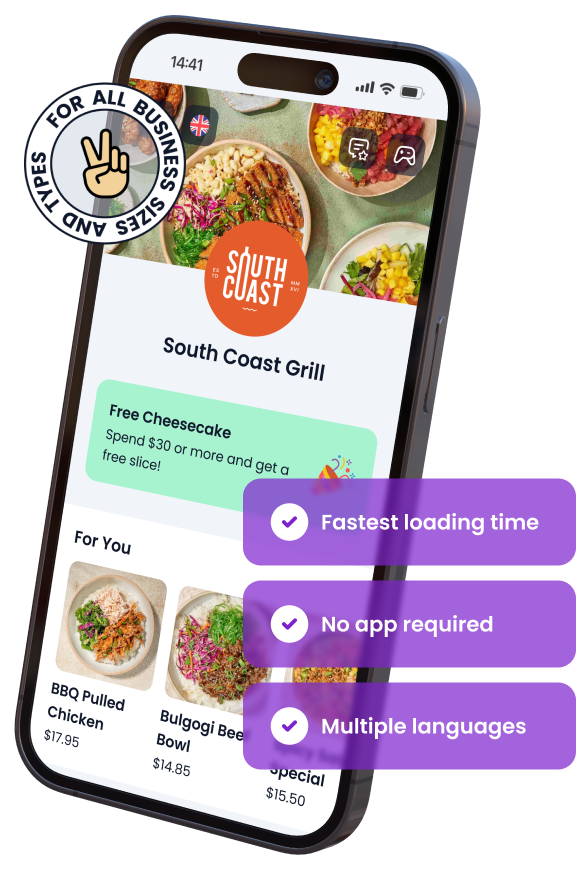
In This Article

Free AI Tools for Restaurants
TRY NOW ➜
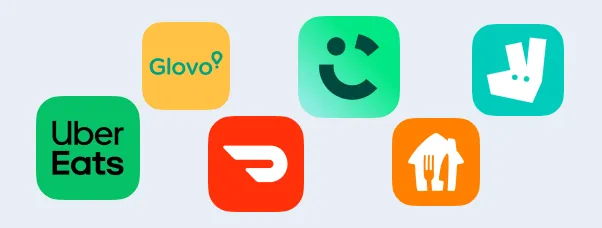
Add your food delivery app links
Make it easy for customers to find your restaurant by adding direct links to popular food delivery apps.


